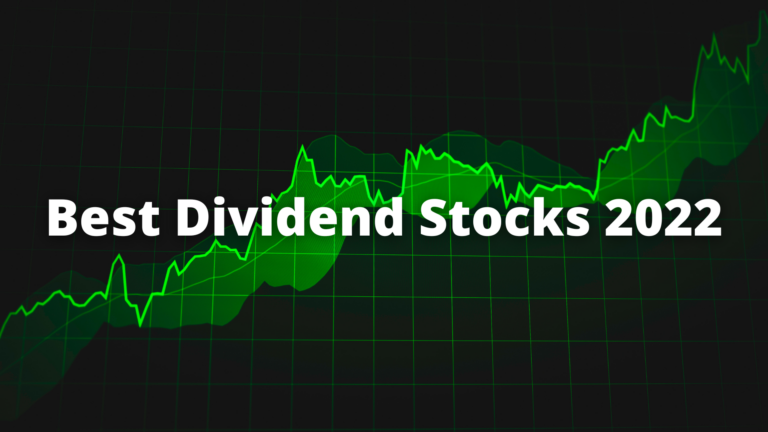Introduction to Dividend Stocks
There are a few different ways to make money on the stock market.
You can buy low and sell high, of course, or you can short the market by selling high and buying low, or you can buy a bunch of dividend stocks, kick back, and let the payments pile up.
Dividend Stocks Are Stocks That Pay More than Just Returns
Profitable companies have to decide what to do with their profits at the end of their respective fiscal years.
Some choose to invest their profits back into their business in the form of capital improvements, infrastructure or IT upgrades, or headcount increases, but some take a slightly different tack and decide to pay out those profits to their shareholders. We call those payments “dividends.”
Investing in Dividend Stocks
Dividend stocks don’t always keep up with the market overall in terms of share prices, and growth stocks typically reinvest their profits in the business rather than pay them out in dividends, but that doesn’t mean dividend investing is a bad idea.
Think of it like this: If a company like IBM is able to pay a dividend year after year regardless of the prevailing market or economic conditions, owning shares in IBM almost guarantees a return on your investment even during bear markets and periods of economic stagnation.
And while dividend stocks may not always come with the same potential for share price appreciation as the rest of the market, their dividend payments provide both a steady source of return and a boost to the overall return on your investment.
Who Let the Dogs (of the Dow) Out?

The most straightforward and least time-consuming way to get into dividend investing is an approach called the Dogs of the Dow strategy.
The Dow Jones Industrial Average, as you may know, is a major stock index that tracks 30 of the largest public companies in America, many of which dole out dividends like clockwork.
The Strategy is fairly simple: All you have to do is identify the 10 or so stocks on the Dow with the highest dividend yields (Equal to the annual dividend / the current stock price) and invest in them.
Why is it called the Dogs of the Dow Strategy, you ask? Great question, and the answer is also fairly simple: Math.
A company’s dividend yield goes up when they increase their dividends, but it also goes up when their share price drops—provided the dividend stays the same.
The Dogs of the Dow Strategy looks for companies whose dividend yields are high and/or have risen recently, IE companies whose share prices have dropped recently.
Stocks that have seen big drops in price don’t look very attractive (like dogs) to most investors, which is where the strategy gets its name.
The strategy is effective for a few reasons.
- Blue Chip (Dow Jones) stocks are reliable earners and almost always regain their value
- You get a steady stream of dividends from reliable companies
- You get both the dividends and the potential upside from increasing share prices
Now that that’s out of the way, here are some of the best dividend stocks you can buy in 2022.
International Business Machines (IBM)
IBM is still a damn fine company with a stable business model and a history of consistent quarterly dividends, even if the days of “nobody ever got fired for buying IBM” are behind us.
IBM’s shares are trading at $130.95 at the time of writing, and each share entitles the holder to a quarterly dividend of $1.65, equivalent to about a 5% annual dividend yield.
Granted, a 5% annual return isn’t that great compared to the market’s average 10% annual growth, let alone to the upside potential of some individual stocks, but there’s something to be said for consistent returns that aren’t affected by market fluctuations.
Last but not least, it’s worth noting that IBM is a stable, established company that’s pretty well insulated against market forces—meaning you won’t have to worry if your dividend payments are going to show up next quarter or for the foreseeable future.
Caterpillar Inc.

Caterpillar is another stable, mature company with a long history of growth and consistent dividend payments.
How consistent are we talking? How does never missing a dividend payment since 1933 sound to you?
Their dividend isn’t that much—just $1.20 quarterly, a roughly 2.5% annual dividend yield—but that’s on top of the stellar 69% growth their share price has seen in the last five years.
Caterpillar is a solid investment in pretty much every respect, and their 28 consecutive annual dividend increases strongly implies their dividend payments will only get bigger in the future.
Essex Property Trust
What do you get when you combine a real estate investment trust that invests in multi-family housing on the west coast with the housing crisis on the west coast? Money, mostly.
Essex Property Trust didn’t make it on this list because it’s a household name, it made it because it’s a mature player in a no-brainer business that’s posted consistent profits and increased their dividend 29 years in a row.
Its quarterly dividend payment of $2.20 per share may only amount to an annual dividend yield of about 3%, but that single stat doesn’t tell the whole story.
Not only has the company seen sustained growth since it went public in 1994, it’s also increased its overall dividend nearly 200% over the past 20 years.
Essex Property Trust won’t be changing the world as we know it or making any major waves in its industry anytime soon, but you can bet your butt that it’ll keep posting solid numbers and paying out dividends like clockwork.
Microsoft
Speaking of reliable but not necessarily exciting companies, have you met my friend Microsoft?
Okay, a $0.62 quarterly dividend with an annual dividend yield of 0.85% isn’t great, but Microsoft has some good things going for them.
For one: Microsoft is a global player with decades of proven performance. That’s nothing to sniff at.
Microsoft’s share price has also rocketed up nearly 300% over the last five years—not too shabby for a corporation that’s almost 50 years old—so you can expect its shares to keep appreciating (unless something terrible happens) on top of the dividend payments.
And speaking of dividends, think back to IBM for a second. Its dividends have increased as its business has matured and its capital has found fewer productive outlets, right?
Well think of it like this: Microsoft’s posted 12 consecutive years of dividend increases, and it isn’t signaling any major moves into costly new lines of business, so isn’t it reasonable to think they might keep on boosting their dividends as time goes on (like IBM. In case you didn’t follow that).
Lowes
Lowes is another established company with a long history of paying dividends and a steadily growing business (seeing a pattern here?).
Their current dividend, $1.05 per share per quarter, only represents a 2% annual yield, but there’s plenty of upside potential with the stock itself.
Though it’s down from its high earlier this year, Lowes’ stock price has grown by 160% in the last five years, and the current housing market implies that the DIY and home improvement trend will continue for some time.
Conclusion
Dividend investing isn’t for everyone. It involves a lot of holding onto stocks for a long time—not too appealing for people with itchy trigger fingers—and is best suited to patient investors looking to follow a longer-term plan.
It is usually a good idea to have at least some dividend-paying stocks in your portfolio for cash flow, reinvestment, and inoculation against market forces, however, so definitely don’t rule dividend stocks out when you’re looking for new investment opportunities.
We are paid subscribers to dozens of stock newsletters. We actively track every recommendation from all of these services, calculate performance, and share the results of the top performing stock newsletters whose subscriptions fees are under $500. The main metric to look for is "Excess Return" which is their return above that of the S&P500. So, based on last 3 years ending June 29, 2025:The Best Stock Newsletters as of June 29, 2025
Ranking of Top Stock Newsletters Based on Last 3 Years of Stock Picks
Rank Stock Newsletter Stock
PicksAverage
ReturnExcess
ReturnPercent
ProfitableMax %
Return1. ![]()
Alpha Picks76 63% 40% 73% 969% Summary: 2 picks/month based on Seeking Alpha's Quant Rating; Retail Price is $499/yr. See details in our Alpha Picks Review. July, 2025 Promotion:
Save $502. ![]()
Moby.co308 43.3% 12.3% 74% 1764% Summary: 60-150 stock picks per year, segmented by industry; Retail Price is $199/yr. Read our Moby Review. July, 2025 Promotion:Next pick free! 3. ![]()
Stock Advisor72 41.2% 6.9% 78% 258% Summary: 2 picks/month and 2 Best Buy Stocks lists focusing on high growth potential stocks over 5 years; Retail Price is $199/yr.
Read our Motley Fool Review.July, 2025 Promotion: Get $100 Off 4. ![]()
Value Investor39 17.5% 6.1% 38% 410% Summary: 10-25 stock picks per year based on Zacks' Quant Rating; Retail Price is $495/yr. Read our Zacks Review. July, 2025 PROMOTION:$1, then $495/yr 5. ![]()
Rule Breakers66 40.0% 4.7% 61% 311% Summary: 2 picks/month focusing on disruptive technology and business models; Lifetime average return of 355% vs S&P500's 149% since 2005; Now part of Motley Fool Epic. Read our Motley Fool Epic Review. Current Promotion: Save $200 6. 
TipRanks SmartInvestor121 10.6% 3.7% 55% 340% Summary: About 1 pick/week focusing on short term trades; Lifetime average return of 355% vs S&P500's 149% since 2015. Retail Price is $379/yr. Read our TipRanks Review. Current Promotion: Save $180 7. 
Action Alerts Plus394 20.0% 3.4% 57% 220% Summary: 100-150 trades per year, lots of buying and selling and short term trades. Read our Jim Cramer Review. Current Promotion: None 8. ![]()
Stock Advisor Canada36 32.3% 0.5% 69% 378% Summary: 1 pick/month from the Toronto stock exchange; Retail Price is CD$199/yr. Read our Motley Fool Canada Stock Advisor Review. July, 2025 Promotion: Save $100 Top Ranking Stock Newsletters based on their last 3 years of stock picks' performance through May 31, 2025 as compared to S&P500. S&P500's return is based on average return of S&P500 from date each stock pick is released. NOTE: To get these results you must buy equal dollar amounts of each pick on the date the stock pick is released. Investor Business Daily Top 50 based on performance of FFTY ETF.
